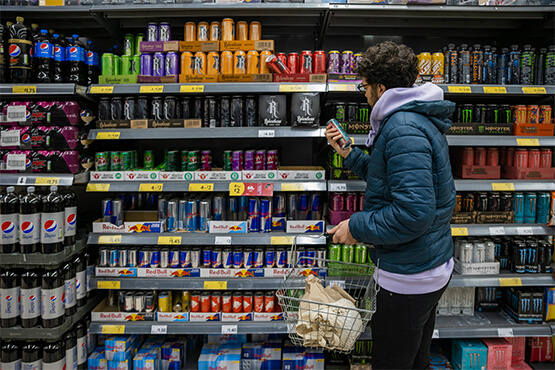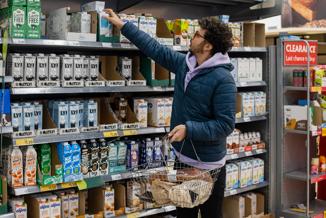The Competition and Markets Authority’s (CMA) final guidance on its interpretation of pricing transparency requirements under Digital Markets, Competition and Consumers Act 2024 (DMCCA) has been published.
This document is key to understanding how the CMA expects businesses to present pricing of their products and services. The fact that the CMA simultaneously announced investigations into pricing practices accompanied by 100 letters to businesses that had given it cause for concern shows its continuing scrutiny of pricing practices. In this article, we cover the new updates to the guidance and what the enforcement announcement means for businesses.
Investigative action
In order to investigate a commercial practice under the DMCCA the CMA only needs to have reasonable grounds for suspecting that a business is engaging in an unfair commercial practice. Once it decides to investigate it is required to publish a notice stating who will be investigated and for what reason and indicate the timetable for the investigation.
The individual notices can be viewed via the CMA’s enforcement announcement. In summary the issues which the CMA is investigating are:
- Presentation of mandatory fees by ticket companies, driving schools and a gym, in particular whether or not the fees are included in the up-front price.
- Homeware retailers are being investigated to ascertain whether time limited sales ended when they said they would and/or if consumers are being automatically opted in to purchasing additional services.
In each case no finding has been made, and the CMA has stated it should not be assumed that the companies have infringed consumer law. The initial stage will last six months with the next update in March 2026.
Advisory action
Following compliance sweeps, the CMA is also sending compliance letters to 100 businesses flagging concerns in relation to the use of additional fees and online sales tactics. Unsurprisingly, because pricing cuts across all sectors the range of the sectors contacted by the CMA is wide, and includes homeware and fashion retailers.
Finalised price transparency guidance: What’s new
Following the consultation we reported on in July, the CMA has now published its final guidance. The final guidance expands on many of the points previously made and gives new examples, but does not include any softening of its approach. Many of the examples are taken from the sectors which the CMA has contacted as part of its advisory and enforcement action.
In the newly included introduction, the CMA is clear that the guidance is for anyone who advertises, markets, sells or otherwise promotes products to consumers at any point in a purchase process, from early-stage advertising to final purchase. It also states that it will be “of use” to other bodies including enforcers. Essentially whilst the guidance is not itself law, it’s likely to be the first port of call when assessing pricing for transparency compliance.
We noted previously that a key thing to consider is the definition of “invitation to purchase” because whilst much of the DMCC reflects the previous law, the requirements on price transparency in the context of invitations to purchase have been strengthened. The DMCCA requires that any time an “invitation to purchase” is made, the “total price” must be given. In a nutshell, an invitation to purchase is any time the trader gives information about a product and its price to a consumer.
Each stage of the customer journey on a retailer’s website where a product and price is presented will constitute a separate invitation to purchase, so retailers must ensure that each separate stage is compliant. Any mandatory charges must be included in all invitations to purchase, even early-stage advertising.
The guidance now expressly states that the person making the invitation to purchase is responsible for ensuring it is compliant. This is the case even if they are not the person making the sale to the consumer (for example price comparison websites, influencers promoting products to their followers, and operators of online marketplaces listing other brands’ products).
The guidance also specifically differentiates between the “total price” and “final price”. The total price includes non-optional charges (such as delivery charges where consumers cannot arrange to collect a product themselves), whereas the final price is the price that an individual consumer will actually pay for the product, including any optional add-ons which the consumer has selected. These add-ons must be truly optional to everyone and if they are non-optional for some consumers, they may need to be included in the total price.
When it comes to delivery charges, the CMA’s guidance summarises the rules as follows:
- Mandatory delivery charges should be included in the invitation to purchase and, wherever the delivery charge is possible to calculate, the charge should be included in the ‘total price’. So if the price of a product is £50 and there is a mandatory delivery charge of £10, the total price of the product must be given as £60.
- Where a consumer must choose between delivery charges (i.e. there is no free collection option), the trader must include the cheapest delivery option until the consumer chooses a different one.
- For websites and apps, retailers can comply by providing an explanation of the delivery fees plus a running total that includes the products selected by the consumer and any mandatory delivery fees which would apply to the order. The CMA has set out various ways of doing this for retail websites where the delivery charge will only apply if the consumer spends under a certain amount. The CMA gives the example of retailers using ‘floating baskets’ which include the mandatory delivery charge before the consumer has selected a product, and which can be updated if the price of the products selected by the consumer meets the threshold for free delivery. Another way of doing this (based on the CMA’s guidance) would be to list the price of the product (say £25) and price of delivery (£5) separately in the PDP, with an “add to basket” button which clearly states the total price (being £30).
- Optional delivery charges (e.g. where there is also a free collection option) must be provided in an invitation to purchase but do not need to form part of the total price and may be indicated separately.
In order not to mislead the price of a product must be a “a realistic, meaningful and attainable price”. Crucially the final guidance notes that if a pricing practice breaches guidance from the Committee of Advertising Practice on prices, then it is also likely to breach the legal prohibition on unfair commercial practices.
Next steps
Now the guidance has been finalised it’s crucial that businesses assess their pricing practices, especially the display of the total price in invitations to purchase, because practices which may have been compliant previously may no longer be so under the DMCCA.
If you’ve received an advisory letter or would like support in ensuring you don’t, our team of specialists can help.
Contents
- The Digital Services Act: Recent enforcement actions and what they mean for retail
- New employee protections and employer obligations under the Employment Rights Bill
- Workplace sexual harassment law: What's changed for employers one year on?
- Addressing worker exploitation in retail supply chains
- Beyond the shopfront: How the Renters' Rights Act will reshape residential lettings in retail
- ASA rulings deep dive: LED facemasks
- Airbrushing to authenticity: A future of age inclusive advertising?
Contact

Katharine Mason
Principal Associate
katharine.mason@brownejacobson.com
+44 (0)330 045 1382










































